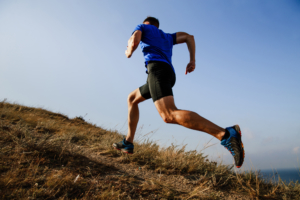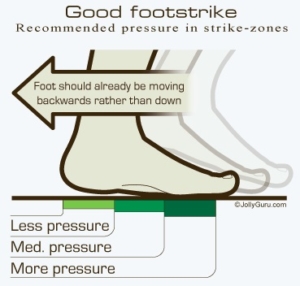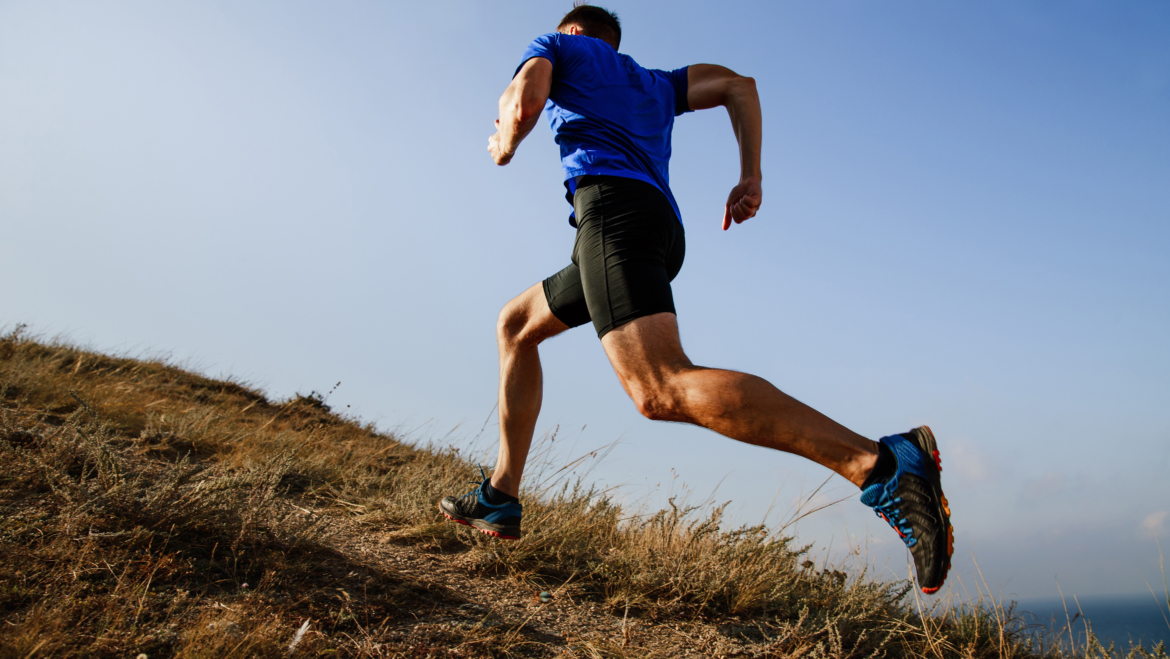If you do any running at all, you’ve seen or heard about minimal running shoes. Minimal running shoes became popular after Chris McDougal’s book “Born to Run” was published in 2009. He promoted barefoot running as a more natural way to run, healthier for your feet and body. Minimal running shoes have no cushion and flat soles.

In the 1980’s, Nike popularized the running shoe with an elevated heel cushion. The idea was to allow runners to extend their stride length by landing on the heel first rather than the mid or forefoot. However, the longer stride with the heel strike first comes with a price, increased risk for joint injury. In the last ten years, elevated heel running shoes have evolved. The latest trend in elevated running shoes is what is called Zero-Drop cushioned shoes. These are elevated shoes, however, the cushion is equally distributed throughout the bottom of the shoe allowing you to still land naturally on the mid and forefoot.
Our bodies were not created with the heel to be the first striking point on the foot while running. The human foot is designed to land on the mid or forefoot first which is best suited to absorb shock. See the Good Footstrike Diagram. The elevated heel provides a great cushion, but as a result of the heel consistently striking first with all the runner’s weight, a runner is more prone to shin splints and other joint injuries.

Running is very different wearing minimal shoes as compared with elevated cushioned running shoes. To prevent injury and maximize the performance of minimal running shoes you need to be aware of how you run. If you are used to running in elevated heel shoes taking long strides landing heel first, you have to change your stride. To correctly run in minimal cushion shoes, intentionally take shorter strides and land first on the mid or forefoot to avoid injury.
I’ve run a 50-mile ultra marathon trail run in minimal running shoes. My feet were bruised and sore due to the lack of cushion on rocky terrain over such a long distance. So, for me, I love minimal shoes for the natural feel, however only for running shorter distances on softer terrain.
If you are new to running in minimal shoes, ease into long distances. Different muscles in your feet and lower legs are engaged when running in minimal shoes. So, it’s important to take it slow to avoid injury. A minimal running shoe that works well for me is the New Balance MT10V1.
I have been running for over 40 years and have incurred some injuries along the way, but since I have been properly running in minimal shoes and Zero-Drop cushioned shoes for the longer distances, my injuries have been reduced.
My experience with elevated running shoes, where the heel was higher then the rest of the shoe, resulted in injuries to my knees. I use the elevated Zero-Drop running shoes for long distances when the terrain is rocky. A shoe like the Zero-Drop Altra Olympus, where there is cushion evenly distributed across the foot, has been one that has worked well for me.
Your stride, pronation, speed, and the terrain are all variables to consider when deciding which type of shoe is best for you.
In my experience running long distances, there is a correlation between joint injury and running in elevated running shoes where the heel is higher than the rest of the shoe. However, there is no right answer as to whether minimal running shoes or elevated Zero-Drop down shoes are better. It’s a matter of your running experience, preference, and style.
What experience have you had with minimal running shoes? Have you tried Zero-Drop cushioned running shoes?


